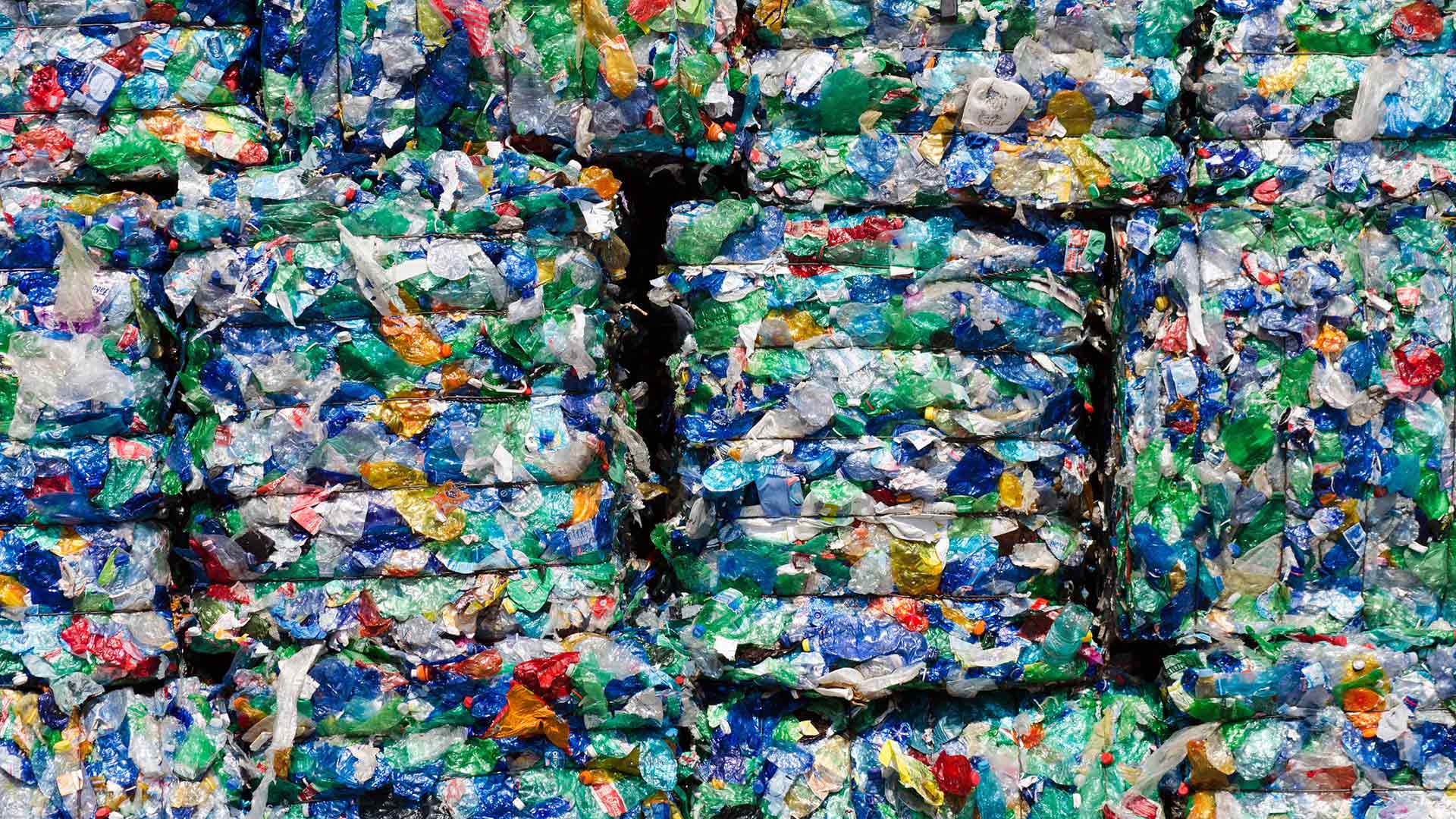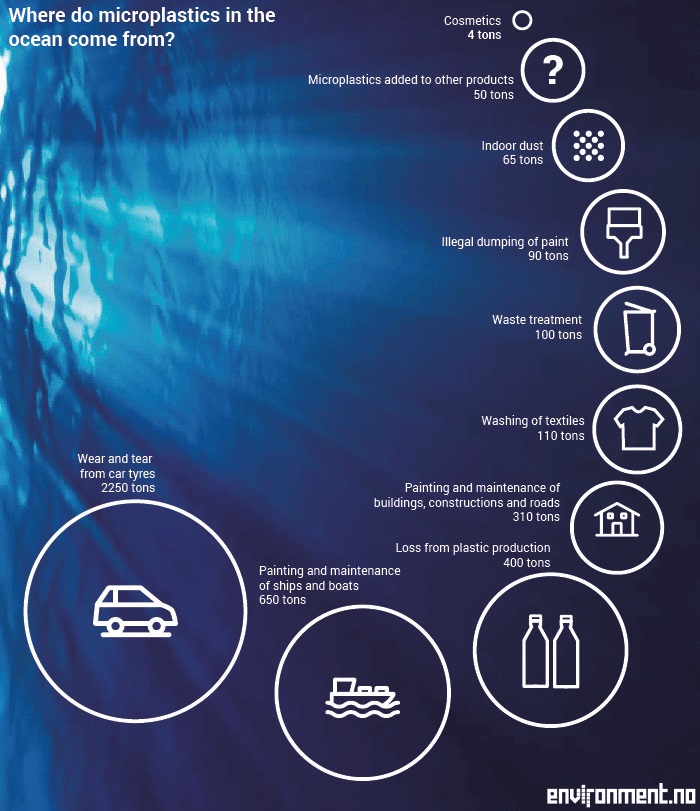Get the right experience for you. Please select your location and investor type.
IMPORTANT NEWS: Transition of investment management responsibilities
First Sentier Group, the global asset management organisation, has announced a strategic transition of Stewart Investors' investment management responsibilities to its affiliate investment team, FSSA Investment Managers, effective Friday, 14 November close of business EST.

The Plastics Paradox
Plastics. Cost-efficiency and durability has made them indispensable in manufacturing and production. It’s also made them a world-wide environmental problem. What can be done to reduce the impact of one of the most ubiquitous materials of the modern age?
Even as bottom-up investors, we still find benefit in exploring investment themes as they relate to sustainable development and which have potential implications for the companies in which we invest on our clients’ behalf.
As part of our ongoing research and engagement process, we have created a list of issues to explore, ranging from the environmental challenges palm oil supply chains face to implications and benefits of a circular economy. We have been working on deepening our understanding of the challenges and opportunities companies face in plastic and packaging.
The sustainable development challenge
Plastic is wonderful stuff. It is lightweight so less carbon intensive to move around, durable, mouldable and less energy intensive to make than glass or aluminium. It helps reduce food waste and decreases the risk of food contamination. Plastics industry group, Plastics Europe, argue that in developing countries 40% of food losses occur at post-harvest and processing levels and, of course, they argue plastic has an important role to play in reducing that.1 There are also a wide range of medical applications, such as packaging for pharmaceuticals and manufacturing healthcare equipment. In the 1980s, the argument was made that plastic bags were better than paper bags given concerns around deforestation.
‘Trucost calculates the total natural capital cost of plastic in the consumer goods industry to be more than US$75 billion per year.’2
However, we are making and using far too much plastic, and it’s not made in a way that’s designed to reuse, rather it’s designed to be thrown away. What’s emerged is the ‘plastics paradox‘:
Over the past several decades, plastic’s unique properties have made it nearly ubiquitous.
It has replaced previously used materials and enabled the creation of new products. However, the evolution of waste management and recycling systems globally has not kept pace with the evolution in materials. The result is that plastic, with its generally low recovery and recycling rates, has in many cases displaced metal, glass, and other materials that are much more likely to be recycled. And herein lies the ‘plastics paradox’: the inevitable forces of innovation and cost optimisation mean that companies that manufacture and use plastic resin are constantly seeking to dematerialise their products. This dematerialisation makes plastic an even more compelling material with even more uses. But it also has an unintended consequence: at the end of each product’s current use, there simply is not enough economic value to make collection of the material for conventional recycling financially viable.’ 3
And the oceans are the dumping ground. Eight million tonnes of plastics leak into the ocean each year. It is estimated that some plastic products will retain their original recognisable form 400 years after finding their way into the ocean.3
We have all heard about the Great Pacific Garbage Patch, a rubbish-covered region of the Pacific Ocean, several hundred miles in diameter.4 Terrifyingly, by 2050 it’s assumed there will be more plastic in the ocean than fish, and that’s assuming fish stocks remain constant which is highly optimistic!5
The problem with plastics in the ocean is not only the bottles and bags floating on top, it’s the micro plastics we cannot see. Micro plastics come about because plastic breaks down into smaller and smaller pieces, but it never actually disappears. It’s also sometimes from unlikely sources. In Norway it was found that the biggest micro plastic contributor was wear and tear from car tyres on the roads, which then washed into the ocean when it rained.6 The other sources are concerning as well and make cosmetic companies recent efforts on banning microbeads seem futile.
Where do microplastics in the ocean come from?

Source: http://www.environment.no/topics/waste/microplastics/.
There are also ‘nurdles’ which are small bits of plastic that are melted down to make plastic products. There is currently no standards for the movement of these and they also find their way to the sea.
Scientists have also highlighted the quandary of missing plastic. For the amount of plastic that has been produced, there should be far more in the oceans. But it is literally missing. It is broken down to nano-particles, stuff grows on it, making it heavier, and it sinks to the ocean bed, or is eaten by fish and maritime life.6 Given 15% of the world’s dietary protein comes from fish, if it becomes inedible or reduces capacity, we have another sustainable development challenge.3
It has also been suggested that plastics, or at least the chemicals that go into making plastic, can be harmful to human health. Bisphenol A, known as BPAs, is used to make plastic clear and tough. However, its hormone-like properties have led to suggestions it is harmful to human health, being linked to a range of ailments including cancer, poor thyroid function, neurological problems and obesity.7
The investment implications
While only 26% of plastic is used in packaging, there are big problems with designed obsolescence. Most plastic packaging is single use, so is thrown away and ends up in the ocean, landfills or clogging drains and waterways. As a result, regulators are increasingly developing policy mechanisms that price these externalities, recognising the total cost of plastics is higher. This might be indirectly through environmental costs being added through the supply chain, such as carbon pricing or direct intervention, as we have already seen with the banning of plastic bags and bottled water, or forcing companies to pay for the pollution generated from their products, for example compulsory take back schemes and levies to offset the cost of reverse vending. Trucost calculates the total natural capital cost of plastic in the consumer goods industry to be more than US$75 billion per year.2 As a result the value at risk suggests companies would be better placed to reduce their dependency on plastic now to protect long-term margins. There is also the potential reputational risk companies’ face when there is more plastic in the ocean than fish and images of, for example, plastic bottles floating in the ocean cannot be good for particular brands.
So what are companies doing?
Recycling
Almost all companies have some sort of awareness of making products out of materials that can be recycled, but it’s also about making it happen.
Natura, a Brazilian consumer goods company, are developing a reverse waste logistics approach with waste-picker cooperatives to upcycle their disposed packaging in a fair way. Dabur, an Indian consumer goods company, has a similar initiative.
H&M, the Swedish clothing retailer, have successfully introduced a ‘take-back’ scheme without a financial incentive.
Enviro Pallets based in Bali have built a business on making durable pallets from used plastics.
Tomra Systems from Norway create sensor-based solutions to enhance productivity by producing reverse vending machines, compactors and sorting machinery to assist consumers and companies recycle used products.
However, more work is required from supermarkets, retailers, and logistics companies to help with the innovation to facilitate customer recycling.
Doing plastic better
Companies have also been looking at ways to ‘do plastic better’. Light-weighting is happening. Natura have an innovative range which uses 70% less plastic than other packaging. Unilever have patented MuCell technology and use 15% less plastic in the Dove body wash bottle. Progress is being made across the industry. Today, a one-litre washing-up liquid bottle uses 64% less material than in the 1970s, a 165g yoghurt pot 43% less, and a two-litre plastic fizzy drink bottle 31% less.8
However, it’s been argued that light weighting has a down side. Reducing the quantity of plastic in packaging, lowers the growth rate of plastic consumption by only a few percentage points, while also reducing the incentive for waste pickers to manually extract some items, since they will contain less material which can be resold.3 This low value plastic typically ends up in the ocean.
So a true example of the plastic paradox. On the one hand, Natura is reducing the plastic in its products while supporting a waste picker initiative. However, the initiative won’t see waste pickers make any money and so they are less incentivised to collect recyclable materials! We hope it will still be successful given the high value harder plastic in the waste stream from other consumer companies.
Coca-Cola has also produced ‘plant bottles’ which use 30% plant-based substitutes for petroleum-based materials. While bio-degradable plastics are encouraging, at the moment they represent only 0.6% of plastics, although they can be used with existing plastic making infrastructure. However, they cost 33% more to make and are typically compostable only under controlled conditions, as in industrial composters.4
All our consumer companies use plastic. Some are doing interesting things with it and most have demonstrated some alignment in thinking. While we don’t think ‘plastic risk’ is a reason to sell a company, or even fundamentally re-visit the investment case of any of our companies (except maybe having a more optimistic view of franchise strength), we do acknowledge there’s more we can do to encourage better sustainable development outcomes.
Source for company information: Stewart Investors investment team and company data. For illustrative purposes only. Reference to any companies mentioned in this communication is merely for explaining the investment strategy, and should not be construed as investment advice or investment recommendation of those companies. Companies mentioned herein may or may not form part of the holdings of Stewart Investors.
Investment terms
View our list of investment terms to help you understand the terminology within this website.
Want to know more?
Important Information
This material is a financial promotion / marketing communication but is for general information purposes only. It does not constitute investment or financial advice and does not take into account any specific investment objectives, financial situation or needs. This is not an offer to provide asset management services, is not a recommendation or an offer or solicitation to buy, hold or sell any security or to execute any agreement for portfolio management or investment advisory services and this material has not been prepared in connection with any such offer. Before making any investment decision you should conduct your own due diligence and consider your individual investment needs, objectives and financial situation and read the relevant offering documents for details including the risk factors disclosure.
Any person who acts upon, or changes their investment position in reliance on, the information contained in these materials does so entirely at their own risk.
We have taken reasonable care to ensure that this material is accurate, current, and complete and fit for its intended purpose and audience as at the date of publication. No assurance is given or liability accepted regarding the accuracy, validity or completeness of this material.
To the extent this material contains any expression of opinion or forward-looking statements, such opinions and statements are based on assumptions, matters and sources believed to be true and reliable at the time of publication only. This material reflects the views of the individual writers only. Those views may change, may not prove to be valid and may not reflect the views of everyone at First Sentier Group.
Past performance is not indicative of future performance. All investment involves risks and the value of investments and the income from them may go down as well as up and you may not get back your original investment. Actual outcomes or results may differ materially from those discussed. Readers must not place undue reliance on forward-looking statements as there is no certainty that conditions current at the time of publication will continue.
References to specific securities (if any) are included for the purpose of illustration only and should not be construed as a recommendation to buy or sell the same. Any securities referenced may or may not form part of the holdings of First Sentier Group portfolios at a certain point in time, and the holdings may change over time.
References to comparative benchmarks or indices (if any) are for illustrative and comparison purposes only, may not be available for direct investment, are unmanaged, assume reinvestment of income, and have limitations when used for comparison or other purposes because they may have volatility, credit, or other material characteristics (such as number and types of securities) that are different from the funds managed by First Sentier Group.
Selling restrictions
Not all First Sentier Group products are available in all jurisdictions.
This material is neither directed at nor intended to be accessed by persons resident in, or citizens of any country, or types or categories of individual where to allow such access would be unlawful or where it would require any registration, filing, application for any licence or approval or other steps to be taken by First Sentier Group in order to comply with local laws or regulatory requirements in such country.
About First Sentier Group
References to ‘we’, ‘us’ or ‘our’ are references to First Sentier Group, a global asset management business which is ultimately owned by Mitsubishi UFJ Financial Group (MUFG). Certain of our investment teams operate under the trading names AlbaCore Capital Group, First Sentier Investors, FSSA Investment Managers, Stewart Investors and RQI Investors all of which are part of the First Sentier Group. RQI branded strategies, investment products and services are not available in Germany.
This material may not be copied or reproduced in whole or in part, and in any form or by any means circulated without the prior written consent of First Sentier Group.
We communicate and conduct business through different legal entities in different locations. This material is communicated in:
- Australia and New Zealand by First Sentier Investors (Australia) IM Ltd, authorised and regulated in Australia by the Australian Securities and Investments Commission (AFSL 289017; ABN 89 114 194311)
- European Economic Area by First Sentier Investors (Ireland) Limited, authorised and regulated in
- Ireland by the Central Bank of Ireland (CBI reg no. C182306; reg office 70 Sir John Rogerson’s Quay, Dublin 2, Ireland; reg company no. 629188)
- Hong Kong by First Sentier Investors (Hong Kong) Limited and has not been reviewed by the Securities & Futures Commission in Hong Kong. First Sentier Group, First Sentier Investors, FSSA Investment Managers, Stewart Investors, RQI Investors and Igneo Infrastructure Partners are the business names of First Sentier Investors (Hong Kong) Limited.
- Singapore by First Sentier Investors (Singapore) (reg company no. 196900420D) and this advertisement or material has not been reviewed by the Monetary Authority of Singapore. First Sentier Group (registration number 53507290B), First Sentier Investors (registration number 53236800B), FSSA Investment Managers (registration number 53314080C), Stewart Investors (registration number 53310114W), RQI Investors (registration number 53472532E) and Igneo Infrastructure Partners (registration number 53447928J) are the business names of First Sentier Investors (Singapore).
- United Kingdom by First Sentier Investors (UK) Funds Limited, authorised and regulated by the Financial Conduct Authority (reg. no. 2294743; reg office Finsbury Circus House, 15 Finsbury Circus, London EC2M 7EB)
- United States by First Sentier Investors (US) LLC, registered with the Securities Exchange Commission (SEC# 801-93167).
- other jurisdictions, where this document may lawfully be issued, by First Sentier Investors International IM Limited, authorised and regulated in the UK by the Financial Conduct Authority (FCA ref no. 122512; Registered office: 23 St. Andrew Square, Edinburgh, EH2 1BB; Company no. SC079063).
To the extent permitted by law, MUFG and its subsidiaries are not liable for any loss or damage as a result of reliance on any statement or information contained in this document. Neither MUFG nor any of its subsidiaries guarantee the performance of any investment products referred to in this document or the repayment of capital. Any investments referred to are not deposits or other liabilities of MUFG or its subsidiaries, and are subject to investment risk, including loss of income and capital invested.
© First Sentier Group


